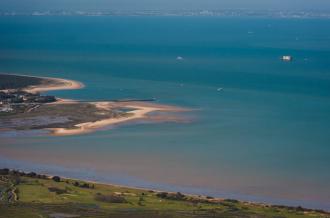Marais d'Arceau et de la Perrotine
Dates & opening times
Descriptif
The site is the largest complex of former salt marshes on the Ile d'Oléron, consisting of a series of depressions or "jas" and hummocks typical of mid-Atlantic marshes. These former salt marshes are now used for oyster farming or as grazing land for cattle and horses. Several canals allow water masses to be exchanged between the marsh and the ocean.
These landscapes may appear very homogeneous at first glance, but are in fact made up of a mosaic of richly varied habitats: lagoons, ditches and hummocks. At the edges of the site, several environments follow one another: reedbeds, dunes and urbanized areas.
The Ile d'Oléron is renowned for being at the heart of the Atlantic coast's migratory zones. The former salt marshes provide a genuine feeding, resting and breeding area for numerous species, including the Avocet elegante, the Sandpiper, the Sanderling, the Brent Goose, the Blackbird, the Ring-necked Plover, the Pipit rousseline, the Pipit maritime (etc.).Several reptiles and amphibians frequent the area, including the Ocellated Lizard, a Mediterranean species at the edge of its range, the Girondine Coronelle, the Southern Treefrog and the Cultivated Pelobate. Notable mammals include the amphibian vole, the European otter and Daubenton's murine. The marsh is also home to the rare and endangered Large Stigma Dragonfly.
The site is bordered by vast expanses of dwarf eelgrass beds on the mudflats, ideal feeding grounds for birds. On land, several species can be observed, illustrating the succession of environments from the upper beach to the more inland marsh areas.
The soft marsh of La Maratte is home to a large population of Grande Douve. The former salt marshes are home to English Cranson, Marsh Orchid, Byzantine Gladiolus and Anchuse officinale.
Media files
Tracking
Marais d'Arceau et de la Perrotine rue pierre bergé17310, Saint-Pierre-d'OléronFrance
ItineraryCharacteristics
Charges
Gratuit



